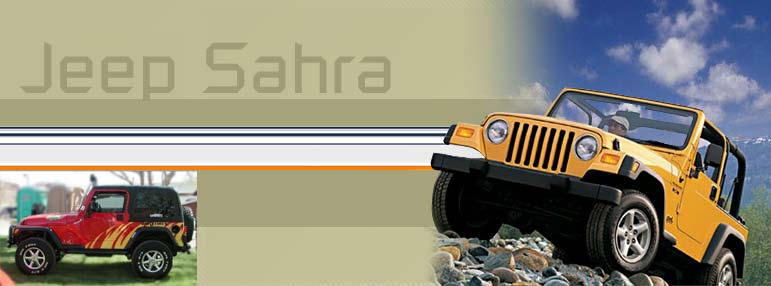IRANIAN JEEPS
Before a few days ago I had no clue that Jeeps were ever produced in Iran. But, after I did some research, I found out that the first vehicle ever produced in Iran was a Jeep. However, finding information on the Sherkat-Sahami company and their Jeeps was much more difficult. In the end, I found 2 companies called Sherkat-Sahami, one of which produced engines, and the other sold hides and other animal-related materials, so I can only assume that the company that produced the engines made these Jeeps. Another company that produces Jeeps in Iran is Phars-Khodro. Their vehicles will be featured at the bottom of the page.

The pictures on this page are all out of a brochure that I found on Ebay from 1975, which advertises Sherkat-Sahami's lineup for that year. This is their version of the J-truck, apparently called the "Simoorgh." Not that it appears to ride higher than its counterparts in various other countries around the world, and its lack of chrome (besides the grille). For dimensions and specification, look at the ad.

This is another picture from the brochure of an Ambulance that is based on the Jeep pickup. This sheet has all of the engine specifications for the Ambulance, the Wagoneer which they call the "Ahoo," and the pickup. It also lists "special features" of the ambulance, including an optional heater. Why someone in Iran, which is very hot, would need a heater is beyond me.

This is the "Ahoo," the Sherkat-Sahami version of the Wagoneer. I am including this partially because it is an FSJ, and in case someone who ran a Wagoneer page needed information on it. This shows the dimensions and specifications of the "Ahoo." Next are pictures of the CJ produced by Sherkat-Sahami and the Sherkat-Sahami logo, but there aren't any captions because this is a pickup site, not a CJ site.




A picture taken rather recently of an Iranian FSJ. This is their version of the Wagoneer, called the "Ahoo". I have no clue what that means. This picture proves the longevity of these vehicles.

Another "Ahoo," this one being smashed into the wall of some military barracks during the Islamic Revolution in Iran in 1979. Strangely enough this "Ahoo" is the same color of the other one above.

A J-Truck with many people precariously piled on it on the Pakistan-Iran border, which leads me to believe that it is from Iran. I wouldn't like to be the one driving this vehicle! However, this photo does show the strength of these vehicles.

This is a Iranian Jeep pickup that appears to be a CJ-6 with a hard top cab. On the back it says "shahbaz", which of you look above, is what a model by Sherkat-Sahami was called. For specifications, please refer to the manual a few pictures up.

At first glance, these vehicles appear to be M38A1s, possibly assembled by Sherkat-Sahami or Pars Khodro, but if you look at the rear fenders on the vehicles you can tell that these are not true Jeeps, but some Iranian copy of the M38A1. This is pprobably because after the Islamic revolution, Jeep halted production of all of their Iranian plants for a few years, and there was a demand for Jeep-like vehicles, so this copy was made.
Note: These Jeeps are not Iranian-made Jeeps but are Kia KM410s. The KM410 was the Korean M38a1 copy

From this shot, you can see that to avoid any trouble from jeep, the grille on these vehicles was rotated 90 degrees. Note the cut in the windshield in order to accommodate the recoilless rifle. Note the damage on most of the vehicles.

In this shot, you can see one of the Iranian KM410s in a military parade. Not the damage to the left front fender.

In 1984, Jeep production resumed once more in Iran. This time, a company by the name of Pars-Khodro assembled the vehicles. The standard model, called the Sahra Jeep, can be seen here. It appears to be A CJ-7 with a YJ front end. Production of these vehicles ended in 1997.

Another shot of the Sahra Jeep.

In 2002, once production of the original Sahra Jeep ended, Pars-Khodro began to assemble the TJ in Iran. This picture is taken from Pars-Khodro's official site, www.parskhodroservice.com .

J-trucks are still fairly common in Iran, even after all these years, although they usually appear to be in less than desirable shape. However, this particular short bed truck is in surprisingly good shape considering its age and the environment it's in. Note the spray paint touch ups and the custom roll bar on the back.

This is typical of the condition one expects to find these trucks in, due to the lack of spare parts for American vehicles.. However, the fact that this vehicle is still running and working on a daily basis is a testament to the durability of these trucks.


Another J-truck in surprisingly good shape for its age. Note the extensive customization done by the owner to this truck, including fender mounted mirrors, home made bedrails, custom painted grille and front bumper, reflectors on the front and rear bumpers, dual license plates, and wood roll bar. I would not like to get stuck driving behind it, though, because it appears that the rear taillights have been replaced by some king of metal mesh. Speaking of the taillights, this truck has the old style rear taillights, even though it had a newer style grille. The Iranian truck's tailgate also is unique to Iran, featuring the Pars-Khodro logo and the model's name, Symorgh.
To go back to the index, click on the Jeepney.